14 Nights / 15 Days
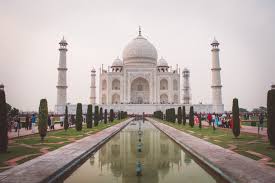
The Colorful Rajasthan with Varanasi Tour is colorful for a lot of reasons. For one, Rajasthan is a glorious land of surprises; it is also a land of enthralling natural beauty and diversity that can easily fascinate even the most seasoned traveler. It is a magnificent land of numerous historic monuments including palaces, forts, temples, etc. with esoteric architecture, exemplary bravery and gracious and debonair lifestyles of Rajputs, and of rich cultures. Those looking for the taste of royal lifestyle just need to enter in any of the several palace hotels or heritage hotels that cordially treat all the tourists like royal guests. Two- You get to see the Taj Mahal, the one thing you`ve been waiting for ever since you boarded your flight to India.
Well what can we say, for no amount of words can ever take away the delight every visitor experiences when he sees the TAJ MAHAL. Sail the Ganges to holy Varanasi. We know you`ve heard about it and read about it but when you see it.......takes your breath away.
Company representatives will receive you on arrival at the DELHI AIRPORT and transfer to your hotel.
DELHI, the capital of kingdoms and empires is now a sprawling metropolis with a fascinating blend of the past and the present. It is a perfect introduction to the composite culture of an ancient land. A window to the kaleidoscope - that is India.
Overnight will be at Delhi.
Breakfast will be at the hotel.
Proceed for the sightseeing of OLD & NEW DELHI.
The tour will begin with a visit to Raj Ghat, a simple memorial to Mahatma Gandhi; drive past the Red Fort continuing to the Jama Masjid by bicycle rickshaws, one of Asias largest mosques. The magnificent Red Fort, overlooking the river Jamuna was built during the years 1638 - 48 when the Moghul Empire was at its peak. The tour continues to Jama Masjid, one of Asias largest mosques and which is viewed from the outside.
People stream in and out of the mosque continuously and the presence of a nearby bazaar means that the area is rarely quiet.
Enjoy the rickshaw ride at Old Delhi.You will be driven to New Delhi, which reflects the legacy the British left behind. The division between New and Old Delhi is the division between the capitals of the British and the Mughals respectively. The division in the walled city and New Delhi also marks the division in the life-styles. The walled city is all tradition where one will be able to glean a past life-style in all its facets, colors and spells. New Delhi in contrast, is a city trying to live up to the best of 21st century standards.
Imperial Delhi will include the Qutub Minar, the tallest stone tower in India. The tour also includes a drive past the imposing India Gate, the Parliament building and the Rastrapathi Bhawan, the Presidents residence. If time permits then visit the Lotus temple located in south of Delhi. It is lotus shaped and has rightly been given the name. It is made of marble, cement, dolomite and sand. It is open to all faiths and is an ideal place for meditation and obtaining peace and tranquility. Its founder, Bahaullah (1817-1892), is regarded by Bahai as the most recent in the line of Messengers of God that stretches back beyond recorded time and that includes Abraham, Moses, Buddha, Zoroaster, Christ and Muhammad.
Overnight will be in Delhi.
Enjoy breakfast at the hotel.
Transfer to the airport to take flight for Varanasi. Reach and check into the hotel.
Picturesquely situated on the crescent shaped left bank of the holy River Ganges, Varanasi, one of the ancient seats of learning in India, is said to be a compound of the names of two streams, the Varuna and the Assi, which still flow in the north and south of the city respectively. This name seems to have been corrupted, in medieval times to Varanasi, which was in use till May 1956, when it was changed to Varanasi, by an order of the Government of India. Varanasi is probably one of the most ancient living cities in India. From time immemorial it has been a great religious center for Hindus and one of their most sacred places of pilgrimage, being visited by millions of people every year. To every visitor Varanasi offers a breathtaking experience. The rays of the dawn shimmering across the Ganges; the high-banks; the temples and shrines along the banks bathed in a golden hue soul stirring hymns and mantras along with the fragrance of incense filling the airand the refreshing dip in the holy waters gently splashing at the Ghats. Varanasi The land where experience and discovery reach the ultimate bliss. Varanasi is also renowned for its rich tapestry of music, arts, crafts and education. Some of the world renowned exponents India has produced in these fields were schooled in Varanasis cultural ethos. Luminaries apart, Varanasi abounds in the art of silk weaving, an exotic work of art which manifests itself in precious Banarasi silk sarees and silk brocades which are cherished as collectors items across the world today. Enjoy the evening AARTI at the GHATS. The guide will be giving a commentary to you on the proceedings and meanings of the chants during the AARTI of the river.
Overnight will be spent at Varanasi.
Enjoy breakfast at the hotel.
Proceed for day guided tour of Varanasi including the Bharat Mata Temple, which features a big relief map of Mother India engraved in marble. Also visit the 18th century Durga Temple, commonly known as the Monkey Temple due to the huge population of the monkeys. Proceed to the Tulsi Manas Temple, crafted from white marble which features the entire Ramayana inscribed on its walls. Also visit the BHU considered as the biggest residential university in Asia. The University Campus houses an Art Gallery and the Mosque of Mughal Emperor Aurangzeb.
Vishwanath Temple: Dedicated to Lord Shiva, this temple is the most sacred shrine in Varanasi. The original temple was destroyed by the Mughal Emperor, Aurangzeb which was later restored by Rani Ahilyabai of Indore in the 18th century. The Gold plating of the dome was done during the 19th century by Maharaja Ranjit Singh of Punjab. Foreigners entry restricted.
Banaras Hindu University: Founded by Pundit Madan Mohan Malviya it is considered to be the largest residential university in Asia. Within the university campus, Vishwanath Temple and Bharat Kala Kendra (Museum) are well worth a visit.
Visit Sarnath 5 miles out of Varanasi: The great Buddha enhanced the sanctity of Varanasi by choosing the environs of the city to preach his first sermon at Sarnath, (only 10 Kms away) after attaining enlightenment. Later, Ashoka, the great Mauryan Emperor erected magnificent stupas and other buildings along with his mighty stone pillar, Dharmarajika Stupa. The 110 ft. tall Damekh Stupa marks the place where Buddha preached first sermon. Sarnath has been a premier center for Buddhism. It is a rich collection of ancient Buddhist relics and antiques comprising numerous Buddha and Bodhisatva images on display at the Archaeological Museum (1000 hrs to 1700 hrs. Open all days except Friday)
Overnight will be in Varanasi.
In the early morning drive to Daswamedh Ghat and take a boat ride on the sacred river Ganges to see the cremation Ghats and witness the living traditions of one of the world`s oldest and most important religions. (To start at 0500 hrs. for the best lifetime experience) For you to appreciate this remarkable city, we`ll transfer you to the banks of the River Ganges before the sun rises. Board a boat with your guide and proceed to the middle of the river, where at sunrise the sight unfolds before you. Thousands of faithful come daily to the banks to bathe and pray while in the background, temples and palaces rise in tiers from the water`s edge. Then return for a walk through the cobblestone streets along the banks of "Ganga". As shops are opening, the place now becomes a beehive of activity as the faithful are coming and going. Visit the Kashi Vishwanath Temple while returning to the hotel.
Return for breakfast to the hotel.
Afternoon proceed to the airport for the flight to Agra.
Reach and check in at hotel. Overnight stay will be in Agra.
Breakfast will be at hotel. Proceed for the sightseeing tour.
AGRA: Two great Mughal monarchs, Akbar and Shah Jahan, transformed the little village of Agra into a befitting second capital of the Mughal Empire giving it the name Dar-ul-Khilafat {seat of the Emperor}. Today a visitor to Agra is caught up in a world of contrasting edifices, of red sandstone and white marble, narrow galleys and quaint buggies, and that irresistible charm that this favorite city of the Mughals still retains. It is not surprising, that modern Agra still reflects its Mughal heritage most conspicuously. A walk down the narrow bustling streets of the city will introduce the visitor to the wafting aroma of Mughlai cuisine.
Relax and pproceed for day sightseeing of Agra.
TAJ MAHAL - Little needs to be said about this architectural wonder which is always the soul raison-de-etre for every tourist`s visit to Agra. Built by Shah Jahan, the Taj is a white marble memorial to his beautiful wife Mumtaz Mahal. This monument took 22 years to be completed and was designed, and planned by Persian architect Ustad Isa. Apart from its stunning design balance and perfect symmetry, the Taj is also noted particularly for its elegant domes, intricately carved screens and some of the best inlay work ever seen.
AGRA FORT Built by the famed Mughal emperor Akbar in 1565 AD, the fort is predominantly of red sandstone. Ensconced within is the picture perfect Pearl Mosque, which is a major tourist attraction. It lies on the bend of the river Yamuna, almost in the heart of the town. Akbar built it as his citadel over the years 1563-73 in the finest architectural style. It has imposing gates and walls of red sandstone and a moat.
After Agra Fort we will visit BABY TAJ The interiors of which are considered better than the Taj.
visit SIKANDRA This beautifully maintained monument is where EMPEROR AKBAR was buried. It is a very low profile monument but it has one of the most awe inspiring tombs. It is surreal how one of the greatest emperors has been put to rest. The manicured lawns has spotted and other varieties of deer roaming in them.
Overnight will be at Agra.
Breakfast will be at the hotel.
Drive to Jaipur visiting fatehpur Sikri enroute.
Fatehpur Sikri is 37 km west of Agra. Jajal-ud-din-Muhammad Akbar, Humanyun`s son, accessed the throne at the tender age of 14. While hunting around Sikri his curiosity was aroused by the songs of some minstrels about the celebrated Khwaja -Mu`inu`d-din Chisti, the founder of the Chisti order of SUFIS. Akbar, who was without a male heir heard about Saint Salim Chisti and visited him in the year 1568. The saint blessed him with 3 sons and in gratitude Akbar ordered the great mosque of Fatehpur Sikri built under his supervision. As a mark of respect to the saint, Akbar shifted his capital to Fatehpur Sikri and built various secular buildings like the Diwan -I-Am, Diwan-I-Khas, Jodhabai palace, Birbal`s house, Marian`s house and the Panchmahal.
Continue drive to Jaipur. Reach and check into the hotel.
Jaipur is the capital of the state of Rajasthan a romantic realm of resplendent palaces, mighty fortresses and regal Maharajahs that lies in the western deserts and is an utterly unique part of India. Proudly belonging to the KSHATRIYA warrior caste and fiercely independent, the Rajput princes made fearsome foes. However, many of them realized that to maintain their wealth and authority locally, it was expedient to proclaim allegiance to the central power. Thus, many enjoyed a privileged position under the Mughal emperors and also the British Raj that followed.
The bustling Rajasthan capital of Jaipur takes its name from its venerated founder Jai Singh II, who was given the title Sawai Maharaja by the Mughal. Literally translated this would mean one and a quarter, suggesting that the Mughal thought this emperor to be more valuable than just one. Jaipur is known as the Pink City on account of the distinctive colour of its buildings. This did not, however, form part of the original plan, but dates back to 1856, when the city was given a wash of pink in honor of a State Visit from Prince Albert.
This evening, visit the Birla Temple to learn more about the fascinating religious life of Jaipur. The marble structure, built as recently as 1985, houses ornate statues including one of Lakshmi (goddess of Wealth and Beauty) and Narayan dressed in gaudy robes, representing a Hindu vision of heavenly luxury. Carvings in the temple and on pillars supporting the covered walkways include images of the Hindu pantheon, as well as Jesus, the Blessed Virgin Mary and St Francis of Assisi. Your visit will coincide with the AARTI Ceremony, which involves oil lamps being lit and waved, in order to awake and invoke the deity.
Enjoy the experience and spend night at Jaipur.
Proceed for a morning excursion to Amber Fort after breakfast. Elephant ride ascent to the fort.
AMBER FORT PALACE Amber is the classic romantic Rajasthani fort palace. Its construction was started by Man Singh I in 1592, and completed by his descendent Jai Singh I. Its forbidding exterior belies an inner paradise where a beautiful fusion of Mughal and Hindu styles finds its ultimate expression. At the foot of the hill you will mount your caparisoned elephant for the slow but steady climb up to the main gate, making your entrance in the time honored fashion. The Fort, completed in the early 18th century, took over 100 years to build and now, although deserted, offers a fascinating insight into the lifestyle of the Moghul ruling families.
Continue sightseeing.
CITY PALACE A delightful blend of Mughal and traditional Rajasthani architecture, the City Palace sprawls over one-seventh of the area in the walled city. It houses the Chandra Mahal, Shri Govind Dev Temple and the City Palace Museum.
JANTAR MANTAR This is the largest and the best preserved of the five observatories built by Jai Singh II in different parts of the country. This observatory consisting of outsized astronomical instruments is still in use.
HAWA MAHAL The ornamental facade of this "Palace of Winds" is a prominent landmark in Jaipur. It is a five-storey structure of sandstone plastered pink encrusted with fine trelliswork and elaborate balconies. The palace has 953 niches and windows. Built in 1799 by Pratap Singh, the Mahal was a royal grandstand for the palace women.
This afternoon is free for you to relax shop or explore independently. Shopping is superb in Jaipur, particularly for gold and silver jewellery, pottery, tie-dye materials, silk, saris, wooden handicrafts and carpets.
Overnight will be at Jaipur.
Enjoy breakfast at the resort.
Drive to Bikaner. Check in to the hotel and relax.
Bikaner retains the medieval splendor that pervades the city`s lifestyle. More popularly called the camel country, the city is renowned for the best riding camels in the world. The ship of the desert is an inseparable part of life here - Be it pulling heavy carts, transporting grains or working on wells. Camels are the prime helpers. Bikaner stands on a slightly raised ground and is circumscribed by a seven km long embattled wall with five gates. The magnificent forts and palaces created with delicacy in reddish-pink, sandstone, bear testimony to its historical and architectural legacy.
Bikaner`s history date backs to 1488 AD when a Rathore Prince, Rao Bikaji a descendant of the founder of Jodhpur (1459 AD) Rao Jodhaji, established his kingdom here. Rao Jodhaji had five sons but Rao Bikaji was the most enterprising of them.
Bikaji chose a barren wilderness called "jangladesh" and transformed it to an impressive city, called Bikaji after the Founder`s Name. The strategic location of Bikaner on the ancient caravan routes that came from west/Central Asia made it a Prime trade center in the times of the year.
Overnight will be at Bikaner.
Enjoy sightseeing tour of Bikaner.
Visit the Junagarh Fort, constructed between 1588 and 1593 by Raja Jai Singh, a general in the Moghul Emperor Akbar`s army. Visit the Old City and the Karni Mata Temple. Also visit the one of the wells of Bikaner - an important source of water are other attractions of the city. These are built on high plinths with slender minaret towers on each of the Four Corners and can be noticed even from a distance.
Later drive to Jaisalmer. Reach and check into the hotel.
Rising from the heart of the Thar Desert like a golden mirage is the city of Jaisalmer. A commanding fort etched in yellow sandstone stands, with its awesome splendor, dominating the amber-hued city.
The city has an interesting legend associated with it, according to which, Lord Krishna the head of the Yadav Clan, foretold Arjuna that a remote descendent of the Yadav Clan would build his kingdom atop the Trikuta Hill. His prophecy was fulfilled in 1156 AD when Rawal Jaisal, a descendent of the Yadav Clan and a Bhatti Rajput, abandoned his fort at Lodurva and founded a new capital Jaisalmer, perched on the Trikuta Hill. His Yadav descent can be traced back to the Mahabharata and the Rajputs were famed for courage and gallantry.
Jaisalmer is studded with magnificent tourist haunts that encapsulates the vivacious culture of this lovely locale. It is laced with beautiful forts, sacred shrines, stately havelis reminiscent of the yester years, well stacked museums and a rippling lake.
Overnight will be at Jaisalmer.
Enjoy breakfast at the hotel. Proceed for a sightseeing tour of the beautiful Jaisalmer city.
Visit the JAISALMER FORT The oldest living Fort in the world. (This is the highlight of the tour)
The fort stands almost 30 metres over the city and houses an entire living area within huge ramparts. Walking through the narrow lanes is an experience worth savoring. It is approached through Ganesh Pol, Suraj Pol, Bhoot Pol and Hawa Pol. Also, within it are many beautiful havelies and a group of Jain temples dating from the 12th to the 15th centuries. The golden - yellow sandstone of Jaisalmer Fort, over 800 years old, crowns the Trikuta Hill. Within its walls, defended by 99 turrets, lies the old city, nearly a quarter of modern Jaisalmer. Seen from outside, the sight must be almost identical to what was seen by merchants on their overland camel caravans to central Asia. Once this desert outpost was an important gate for the trade route, and Jaisalmer grew wealthy on the proceeds. But the advent of commercial shipping relegated the town to relative obscurity. Known as SONAR QUILA, rising from the sand , the mega structure merges with the golden hues of the desert ambience and the setting suns in its most colourful shades gives it a fairy tale look. Its simply a magic, the bastions envelops a whole townships that consist of palace complex various security sources and the havelis of rich merchants carved with an incredibly light touch, several temples and the residential complexes of the armies and traders placed strategically on the trade route, from where the ancient caravans passed.
Enjoy the sightseeing of the following places out of which the JAIN TEMPLES are inside the fort.
NATHMAL KI HAVELI: Two architect brothers built it in the 19th century. Interestingly, while one concentrated on the right, the other concentrated on the left and the result is a symphony epitomizing the side by side symmetry during construction. Paintings in miniature style monopolize the walls in the interior. Mighty tuskers carved out of yellow sandstone stand guard to the Haveli.
SALIM SINGH KI HAVELI: This Haveli was built about 300 years ago and a part of it is still occupied. Salim Singh was the prime minister when Jaisalmer was the capital of the princely state and his mansion has a beautifully arched roof with superb carved brackets in the form of Peacocks. The mansion is just below the hill and it is said that once it had two additional wooden storeys in an attempt to make it as high as the maharaja`s palace, but the maharaja had the upper storey torn down.
PATWON JI KI HAVELI: This is one of the largest and most elaborate Haveli in Jaisalmer and stands in a narrow lane. It is five storeys high and is extensively carved. It is divided into six apartments, two owned by archaeological Survey of India, two by families who operate craft-shops and two private homes. There are remnants of paintings on some of the inside walls as well as some mirror work.
TAZIA TOWER: The delicate pagoda like Tazia Tower rises from Badal Mahal (Cloud Palace). Rising in its five-tiered splendor, with each storey graced by a delicately carved balcony, the tower is of historical significance. Muslim craftsmen built it in the shape of a Tazia and gifted it to their royal patron
GODI SAGAR LAKE: This tank, south of the city walls, once held the town water supply, and befitting its importance in providing precious water to the inhabitants of this arid city, it is surrounded by small temples and shrines. The beautiful yellow sandstone gateway arching across the road down to the tank is the Tilon-ki-Pol, and is said to have been built by a famous prostitute, Tilon. When she offered to pay to have this gateway constructed, the Maharaja refused permission under it to go down to the tank and he felt that this would be beneath his dignity. While he was away, she built the gate , adding a Krishna temple on top so that king could not tear it down.
JAIN TEMPLES: These fine Jain temples were built in the 12th to 15th century, within the Jaisalmer Fort. They are beautifully carved and dedicated to Rikhabdevji and Sambhavnathji. The Gyan Bhandar, a library containing some extremely old manuscripts, is within the temple complex.
During late afternoon proceed to the SAND DUNES for visiting the typical Rajasthani Desert Village. View the sunset from the dunes, as the sky is set on fire. Return to the village for dinner amidst Rajasthani musicians playing haunting tunes.
Overnight will be at Jaisalmer.
Breakfast will be at the hotel.
Drive to Jodhpur. Reach and check into the hotel.
Set at the edge of the Thar Desert, the imperial city of Jodhpur echoes with tales of antiquity in the emptiness of the desert. Once the capital of the Marwar state, it was founded in 1459 AD by Rao Jodha-chief of the RATHORE clan of Rajputs who claimed to be descendants of Rama - the epic hero of the RAMAYANA. It is also referred as the Blue City, due to the indigo tinge of the whitewashed houses around the Mehrangarh Fort (the old city). The blue houses were originally for Brahmins but non-Brahmins soon joined in, as the colour was said to deflect the heat and keep mosquitoes away. Jodhpur lies near the geographic center of Rajasthan state, which makes it a convenient base for travel in a region much frequented by tourists. The old city of Jodhpur is surrounded by a thick stone wall. The wall has six huge gates called Nagauri gate, Merati gate, Sojati gate, Jalori gate, Siwanchi gate and Chand pool.
Overnight will be at Jodhpur.
Enjoy breakfast at the hotel. Proceed for a sight seeing tour of the city.
Mehrangarh Fort: Situated on a steep hill, Mehrangarh fort is one of the largest forts in India. The beauty and the grandeur of numerous palaces in the fort narrates a saga of hard sandstones yielding to the chisels of skilled Jodhpuri sculptures. Mehrangarh Fort, spreading over 5 km on a perpendicular hill and looking down 125 meters, presents a majestic view on city horizon. It was built on advice of a saint in 1459 to establish an impregnable head-quarter. This Fort is one of the best in India with its exquisitely latticed windows, carved panels, elaborately adorned windows and walls of Moti Mahal, Phool Mahal, and Sheesh Mahal. A collection of musical instruments, palanquins, royal costumes, furniture and the cannons on the fort`s ramparts are well preserved.
Jaswant Thada: Close to the fort complex, lies Jaswant Thada. This 19th century royal cenotaph built in white marble in commemoration of Maharaja Jaswant Singh II and three other cenotaphs stand nearby. The cenotaph of Maharaja Jaswant Singh holds the rare portraits of the rulers and Maharajas of Jodhpur. A visit inside the cenotaphs, with some villagers of the region, would bring forward the reverence they still hold for their brave kings.
Drive to Udaipur visiting Ranakpur enroute.
The RANAKPUR TEMPLES, dating back to the 15th century have 200 pillars, none of which are alike, support its 29 halls. The Temple abounds with intricate friezes and sculptures. Includes visits to two more Jain temples and the Temple of the Sun God with its erotic sculptures.
Continue drive to Udaipur. Reach and check into the hotel.
The city of Dawn, Udaipur is a lovely land around the azure lake, hemmed in by the lush hills of the ARAVALLIS. A vision in white drenched in romance and beauty, Udaipur is a fascinating blend of sights, sound and experiences and inspiration for the imagination of poets, painters and writers.
Its kaleidoscope of fairy-tale palaces, lakes, temples, gardens and narrow lanes strewn with stalls, carry the flavor of a heroic past, epitomizing valor and chivalry. Their reflection in the placid waters of the LAKE PICHOLA is an enticing sight.Udaipur is the jewel of MEWAR a kingdom ruled by the Sisodia dynasty for 1200 Years.
Overnight will be at Udaipur.
Breakfast will be at hotel.
Proceed for sightseeing tour of Udaipur, stopping first at City Palace.
City Palace: Standing on the east bank of Lake Pichola, is a massive series of palaces built at different times from 1559 A.D. The balconies of the palace provide panoramic views of "Jag Niwas" (the world wide famous Lake palace hotel), Jag Mandir on one side and on the other the city of Udaipur. Its main entrance is through the triple-arched gate - the Tripolia, built in 1725. The way now leads to a series of courtyards, overlapping parations, terraces, corridors and gardens - a harmonic profusion hard to describe. There is a Suraj Gokhda, where the maharanas of Mewar presented themselves in the times of trouble to the people to restore confidence. The Mor-chowk (Peacock courtyard), gets its name from the vivid mosaics in glass decorating its walls. The chini chitrashala is noteworthy while a series of wall paintings of KRISHNA are on display in Bhim Vilas. There are numerous other palaces such as Dilkhush Mahal, Sheesh Mahal, Moti Mahal and Krishna villas - in memory of a princess of striking beauty who poisoned herself to avert a bloody battle for her hand by rival princess. Now the palace contains many antique articles, paintings, decorative furniture and utensils and attracts thousands of visitors every day.
Here you will marvel at rooms with mirrored walls and ivory doors, colored glass windows and inlaid marble balconies and the Peacock Courtyard.
Saheliyon Ki Bari: Maharana Sangram singh builds this in the mid 18th century. The `garden of the maidens` brings to mind the lifestyle of the ladies of the court. The delightful gardens appear discreet and in impeccable taste. There are four pools with dainty kiosks, and all around are flowerbeds, lawns, pools and fountains protected by a series of walls and shady trees. The Foundation of the Sahelion Ki Bari functions solely by water pressure and no pumps are used. The garden has a lotus pool, a sitting room decorated with paintings and glass mosaics. The whole ambiences are flavored by the nostalgia of those beautiful bells enjoying themselves in a lavish aura.
Bagore Ki Haveli: This is a very congenial old building built right on the waterfront of Lake Pichola at Gangori Ghat. Amir Chand Badwa, the Prime Minister of Mewar built it in the eighteenth century. The palace has over hundred rooms and some very interesting display of costumes and modern art. The glass and mirror in the interiors of the Haveli delicate work and well preserved too. It also preserves a fine example of Mewar Painting on the walls of Queen`s Chamber. The two peacocks made from small pieces of colored glasses are fine examples of glasswork. After the death Badwa the building became the property of Mewar State. It came to be occupied by Maharana Shakti Singh of Bagore who built the palace of the three arches also in 1878 and it acquired its name of Bagore-Ki Haveli, the house of Bagore. After independence the structure lay in neglect until 1986 when it housed the West Zone Cultural centre.
Jagdish Temple: The temple is situated in the middle of the city. The temple of Jagannath Rai, now called Jagdish-ji, is a major monument and should be seen carefully. Raised on a tall terrace and completed in 1651, it is a tribute alike to the tenacity of its builders and the resilence of the art tradition it represents. It attaches a double storeyed Mandapa (hall) to a double - storied, saandhara (that having a covered ambulatory) sanctum. The mandapa has another storey tucked within its pyramidal samavarna (bell - roof) while the hollow clustered spire over the sanctum contains two more, non - functional stories. Lanes taking off from many of the sheharpanah (city wall) converge on the Jagdish Temple and walking leisurely through them brings you face with the many layers of the cultural palimpsest that Udaipur is. It was built by Maharana Jagat Singh Ist in 1651 A.D.
Proceed for Evening Motor launch cruise on the placid waters of Lake Pichola. From the boat you will be able to view the city of Udaipur as it rises majestically above the lake in the middle of the Rajasthan desert. Also visit the Jag Mandir Palace - the other island palace in the middle of the lake. Spend some time at the Jag Mandir Palace.
Overnight will be at Udaipur.
Breakfast will be at hotel.
Visit Eklinji & Nagda temples.
Eklinji is associated with Lord Shiva and a few of the temples date back to the 10th century. Chiseled out of sandstone and marble, the main temple enshrines a four-faced Shiva with an enormous double storied mandapam, under a huge pyramidal roof.
Nagda is the ancient capital of Mewar, lying midway between Udaipur and Nathdwara and located next to the Bagela Lake. There is a group of 108 temples here. Legend has it that it was founded by Nagaditya, the fourth Mewar King in the 6th century and was a stronghold of the Sisodia Empire.
Transfer to the airport to take flight for Delhi. Reach and enjoy last minute shopping.
As per the flight timings you will be transferred to the airport to take flight back home with sweet memories of the India tour.
TOUR ENDS!!
We are Dealing in Tour & Travels Services. Read More...
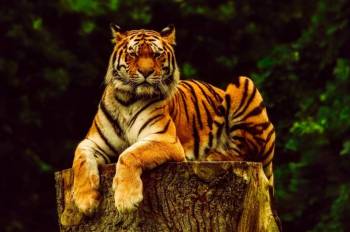 10D/9N
10D/9N
10 Days Golden Triangle with Wildlife
Kumarakom - Munnar - Periyar - Kailasam
 8D/7N
8D/7N
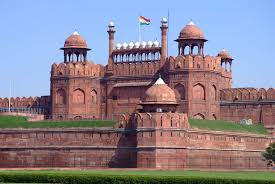 12D/11N
12D/11N
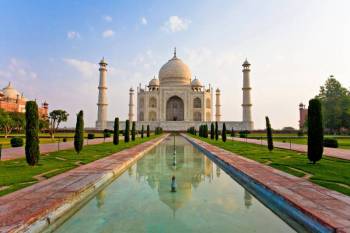 12D/11N
12D/11N
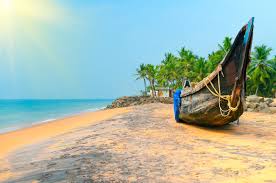 9D/8N
9D/8N
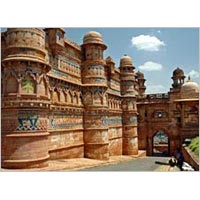 15D/14N
15D/14N
New Delhi - Agra - Gwalior - Bhopal - Indore - Mumbai - Tikamgarh - Chhatarpur - Au..
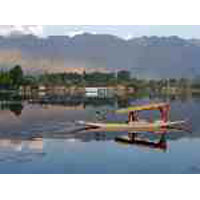 15D/14N
15D/14N
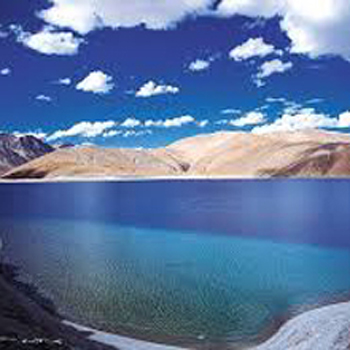 15D/14N
15D/14N
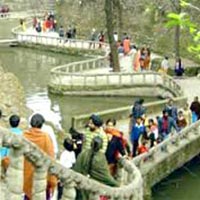 15D/14N
15D/14N
Chandigarh - Shimla - Manali - Dalhousie - Amritsar - Dharamshala
 15D/14N
15D/14N
New Delhi - Haridwar - Rishikesh - Shivpuri - Agra - Jaipur
 15D/14N
15D/14N
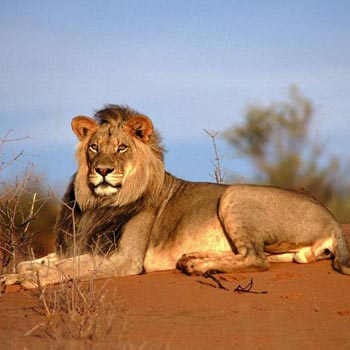 15D/14N
15D/14N
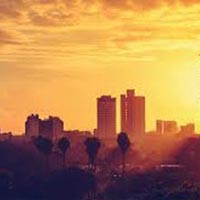 15D/14N
15D/14N
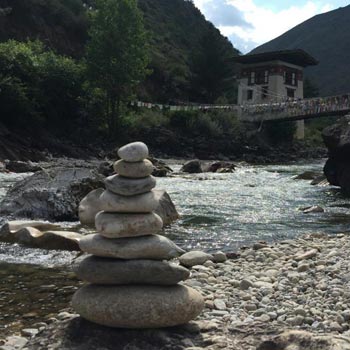 15D/14N
15D/14N
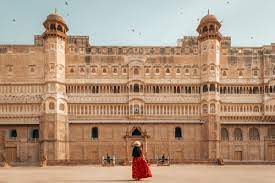 13D/12N
13D/12N
Rajasthan Tour Package 12 Night - 13 Days
Ajmer - Bikaner - Jaipur - Jaisalmer - Jodhpur - Mount Abu - Pushkar - Udaipur
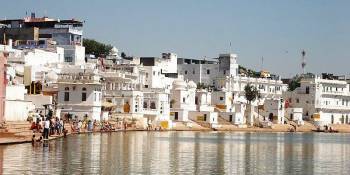 13D/12N
13D/12N
12 Nights Rajasthan Package From Jaipur
Ajmer - Bikaner - Jaipur - Jaisalmer - Jodhpur - Mount Abu - Pushkar - Udaipur
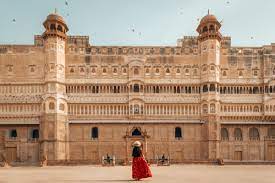 13D/12N
13D/12N
Rajasthan Tour Package 12 Night - 13 Days
Ajmer - Bikaner - Jaipur - Jaisalmer - Jodhpur - Mount Abu - Pushkar - Udaipur
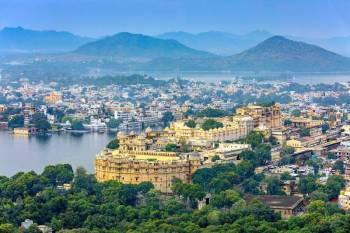 12D/11N
12D/11N
11 Nights 12 Days - Delhi Agra Rajasthan
New Delhi - Mathura - Agra - Jaipur - Ajmer - Pushkar - Udaipur - Mount Abu - Ranak..
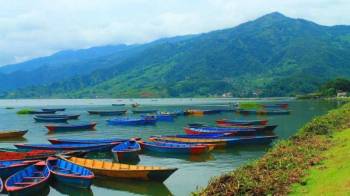 12D/11N
12D/11N
11 Nights - 12 Days Nepal Tour From Gora..
Prayagraj - Gorakhpur - Varanasi - Ayodhya - Kathmandu - Pokhara - Chitwan - janakpur
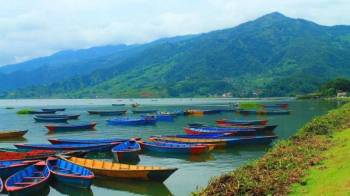 12D/11N
12D/11N
11 Nights - 12 Days Nepal Tour From Gora..
Prayagraj - Gorakhpur - Varanasi - Ayodhya - Kathmandu - Pokhara - Chitwan - janakpur
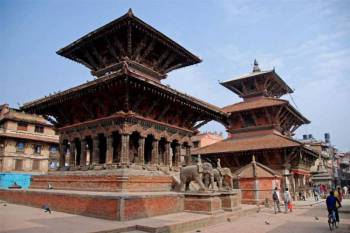 12D/11N
12D/11N
11 Nights - 12 Days Nepal Tour Package - 2
Prayagraj - Gorakhpur - Varanasi - Ayodhya - Kathmandu - Pokhara - Chitwan - janakpur
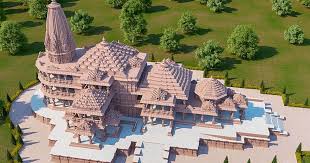 12D/11N
12D/11N
Prayagraj - Varanasi - Bodhgaya - Ayodhya - Pokhara - Chitwan - Parsa
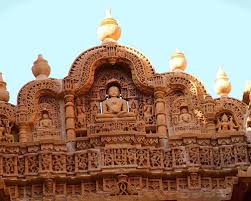 10D/9N
10D/9N
9 Night - 10 Days Rajasthan Tour Package
Ajmer - Jaipur - Jaisalmer - Jodhpur - Mount Abu - Udaipur